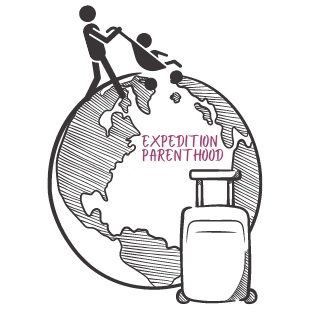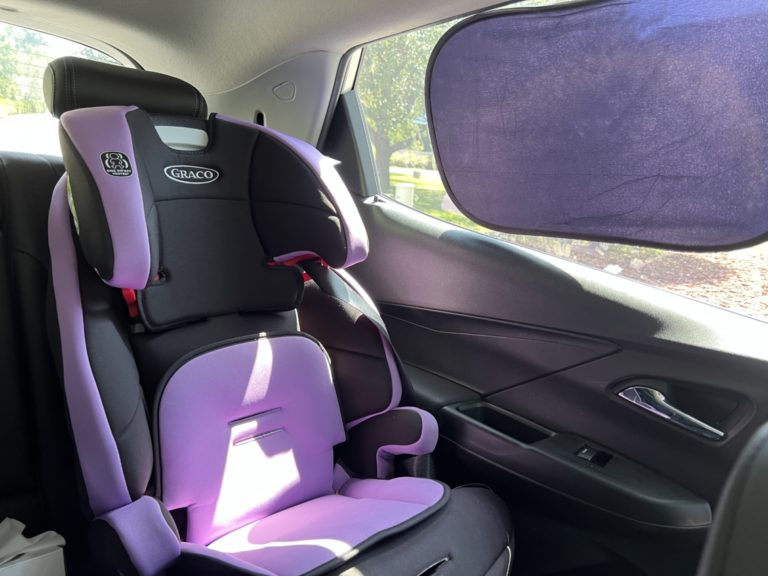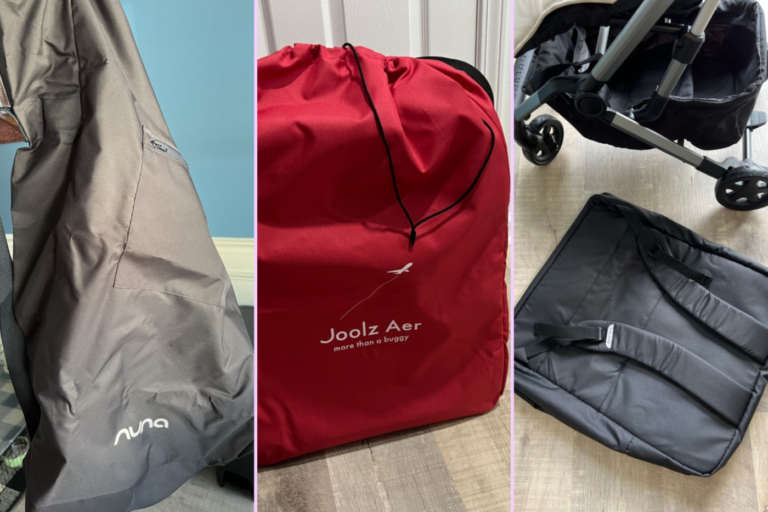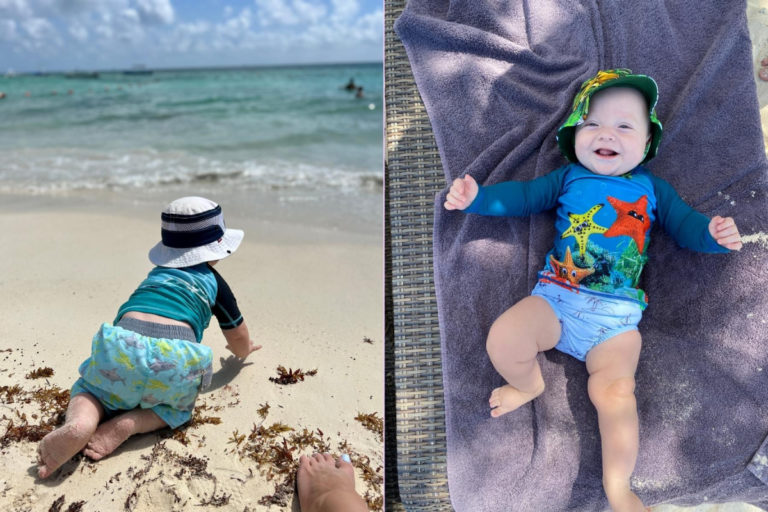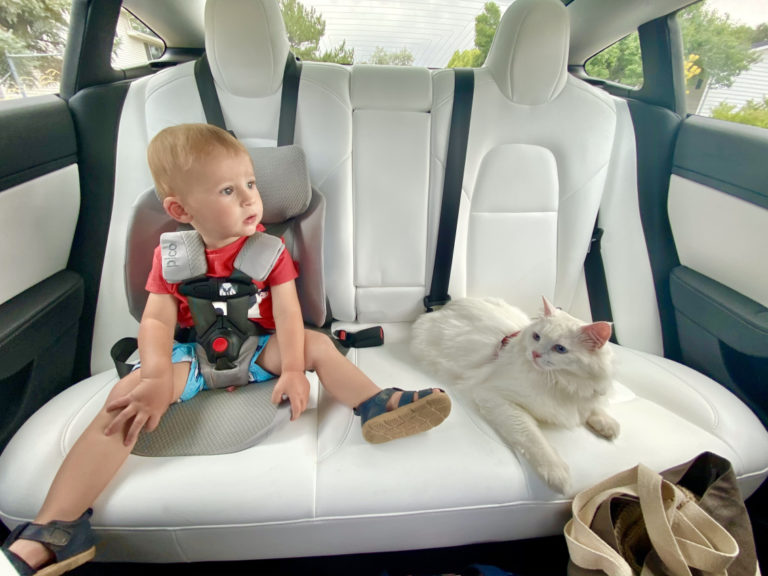Guide to Flying with a Baby (After 100+ Flights with Infants!)
Our first son took over 30 flights before he was 8 months old, by the time he was 14 months, it was an entirely different story. If you feel like flying with a baby is a daunting task, don’t worry, it’s nowhere near as hard as flying with a mobile toddler.
What I’m trying to say is, don’t be afraid of taking a plane with an infant. It’s not as hard as it may seem!
While I know that every child is different, I can honestly say that younger babies sleep more and are easier to carry, so they’re much less of an ordeal than youngsters who need your attention 24/7.
Since the birth of both our children, we’ve taken countless flights with baby, 2 under 2, added a cat, and solo, so I’m not exaggerating when I tell you I had plenty of personal experiences to draw on when writing this guide. Hopefully, my tips and tricks will help ease your mind so you can start traveling with your kids.
Minimum Age for Babies on Planes
The first thing to understand about flying with a baby is what you can and cannot do. Knowing the rules is half the battle!
Generally, the minimum age for a baby to fly is 2 weeks old. That being said, every airline has a different policy and some allow you to fly after just 1 week with an approved doctor’s note.
We flew with Dylan when he was exactly 2 weeks old as he was born in Poland and we were eager to get him back home. Holden flew at 6 weeks when we came back home from Mexico, where he was born.
Some people may feel that 2 weeks old is quite young, but in reality, it’s way easier than we originally thought. Both my children slept through most of their first flights and the crew loved them.
Is it Safe to Fly with a Baby?
Yes, it is safe to fly with a baby! In general, flying is a very safe mode of transport (much safer than a car) and it’s not any less safe for a baby than an adult.
If you’re wondering about health risks and vaccinations, babies get their round of shots at 8 weeks. Many people opt to wait to travel until then or even the next round of shots.
Keep in mind, that especially in the US many kids start daycare at 6 weeks, so before the shots. People also use public transport and take kids outside all over the world before they receive their first shots, so it’s not necessarily very different.
Do Babies Ear Pressure Pop?
Another thing that many people are often worried about is their baby’s ear pressure. People kept telling us that it would be a problem during take-off and landing as the cabin pressure changed, but honestly, we’ve never experienced it.
If you’re worried, you can always nurse on take off, or have a bottle or a pacifier on hand to alleviate any discomfort during these parts of the flight.
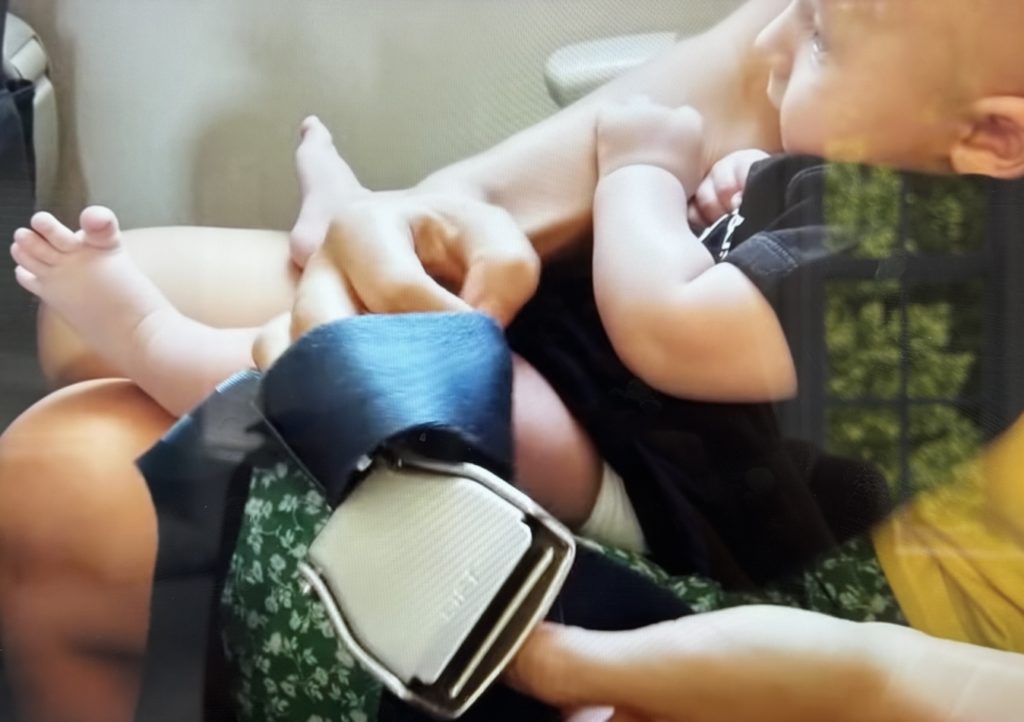
When to Fly with a Baby?
Red eye, day flight, layover – which is best?
Many parents try to time their flights to correspond with their babies sleeping schedules however in my experience, this is not a good idea, because babies can be unpredictable.
Even if you have a baby that is a great sleeper, they’re very unlikely to continue their sleep pattern when traveling. They might even sleep more when flying, or not sleep at all.
Don’t worry too much about trying to schedule your flights around your sleeping baby, choose what is most convenient for you.
Generally in our experience, the time didn’t matter until about 9 months. After 15 months we loved red-eye flights when flying across the ocean, because the kids always slept for a significant portion of the flight.
Seating Options for Infants
Probably the biggest decision you need to make when flying with a baby is where and how they are they going to sit. There are a few different options depending on the aircraft, but know that you often need to decide in advance (unless flying Southwest).

Lap Babies
When flying with a baby under 2 you can have your baby sit on your lap if they are under 24 months old. For flights in the US, adding a lap baby to your ticket is free, internationally you can expect to pay around 10% of the adult price for a lap infant.
For flights within the US you won’t be given a seatbelt for the baby and must hold onto them at all times, whereas for flights in Europe, you will be provided with a seatbelt extender that clips onto yours.
The regulations vary by region and while one option isn’t necessarily safer than the other, you will need to comply with them so it’s something worth knowing.
TIP: If you’re flying with your partner, book the aisle seats on either side of a middle row right in front of the toilets. Unless the flight is completely full, no one will book those seats on purpose which means you might end up with a whole row to yourself, making the flight much easier. If someone does book a seat there, you can always ask them to swap.
Bassinets on Airplanes
If you are taking an international flight, many airlines have bassinets available to use for lap babies only. It varies between airlines but generally, you don’t need to pay any extra for the use of a bassinet (you might have to upgrade seats on some airlines).
If you are lucky enough to get a bassinet, you can have your baby lying down for the whole fight which is great, however, I don’t always recommend them for babies over 7 months old.
Note that these aren’t available on all flights and are usually quite limited in number so you can’t really count on securing one all the time.
Car Seats for Infants on Planes
If you don’t want to risk having a squirmy, sweaty baby on your lap for the entire flight, another option is to book your baby their own seat.
Babies under 2 years old must be restrained in a car seat or special harness if you book a seat for them.
You will need to also bring an FAA approved infant car seat for your little one and there are quite a few restrictions with their use.
Another thing to know if you are planning on using a car seat for one of your children is that car seats can only be installed only in the window seats.
Approved Infant Car Seats on Airlines
Every airline has its own regulations around which car seats are approved for use on board. That being said, many of them are quite similar.
Here are some of the general guidelines to check before your flight:
- Car seat must have a tag showing that is it FAA-compliant and made for use on aircraft
- The car seat must fit within the dimensions of the seat
- You have to be able to install the seat yourself and use the correct straps
- Some airlines allow forward-facing car seats only (so they don’t restrict the seat in front of you from reclining)
IMPORTANT: If you’re flying to/from Australia on Australian operated airline (eg. Qantas, Virgin Australia), the car seat must be exclusively Australian to be permitted on board.

Should You Bring a Baby Car Seat on Board?
Another thing you have to think about when deciding on whether or not to buy your baby a ticket is that if you bring your car seat along, you will need to carry it with you for the entire trip.
Are you going to use it enough to make it worthwhile? In most places, you can use public transportation to get around or organize a taxi with a car seat installed in advance to take you to your hotel.
I personally think that if you are going to be road-tripping at your destination and are traveling with a baby, absolutely bring your own car seat as many rental places do not offer good car seats for infants. Do you necessarily have to take it onboard? No, as most airlines allow you to check in baby items for free.
TIP: If you’re going to check in your car seat, make sure to get a car seat bag for it to minimize the risk of damage.
Our kids do not love sitting in their car seats and out of all the flights we’ve taken with our two boys, only once did we try seating Holden in a spare seat beside us. Spoiler alert, he only sat there for 20 minutes and needed to be held for the rest of the flight. This meant the car seat was needlessly taking up our extra room the entire time, because it wouldn’t fit in the overhead bins.
Baby Carriers
Don’t get too excited if you’re a fan of baby carries as you cannot use them during take-off, turbulence, or landing. They’re only permitted while cruising on flights.
So many parent bloggers recommend bringing a baby carrier even if it’s just to wear your baby through the airport. You need to remove the child and carrier for security, so that defeats the purpose of it.
Our kids don’t really like the baby carrier and it can be sweaty and uncomfortable after a long period of time, so we mostly used them on hikes and never at airports or in-flights.

Documents Needed to Fly with a Baby
Just like adults, you need to make sure you have all the correct paperwork to fly with your baby. Don’t worry, it’s not as hard as you think.
Flying Domestically within the US
US babies do not need a passport to travel domestically within the USA however, the documentation requirement varies between airlines. Some may ask for a birth certificate that matches the parent’s ID.
Baby Passports
If you are flying internationally, you will need a passport for your baby. No matter how young they are there are no exceptions.
It’s usually pretty easy to arrange and doesn’t take too long. They tell you to allow 6-18 weeks but we managed to get both of Dylan’s passports (Polish and USA) in 5 days from overseas.
Every country has different procedures for getting baby passports but I can tell you that the hardest part is usually getting the passport photo. Many studios don’t work with infants, and it can be tricky to get something usable!
NOTE: You can’t use electronic passport gates anywhere with children under 12, so you will have to wait in long immigration lines. Make sure to bring snacks and entertainment to keep your little ones occupied!
Do babies need a ticket to fly?
This also changes from airline to airline. If you wish to book your child their own seat and use a car seat, you will always need a ticket for your baby that’s added to yours
For lap babies within the US, you can sometimes add them to your own ticket at the check-in desk however, some airlines require you to book in advance. It’s best to call the helpline to make sure.
International flights always require you to purchase a lap infant ticket in advance. You can usually do this quite simply when booking online, but if you are required to add your unborn child’s date of birth, it’s best to give the airline a call when you have all the information!
What to Pack when Flying with a Baby
If it’s your first time flying with a baby, it’s understandable that you don’t want to forget anything important. But truth be told, you don’t need to take absolutely everything for “just in case”.
A few things that are essential involve:
- Foldable Travel Stroller – I am a big advocate for travel strollers that fit in the overhead bins. At first, I thought it was unnecessary, but my wife insisted and I admit – after having multiple strollers be rejected from carry-on and broken in transit, I finally gave in and can absolutely recommend the Babyzen Yoyo+.
- Diapers – Bring a lot! In my experience, babies poo and pee more on planes, so will probably need changing more often.
- Baby Food – Even on international flights where they feed everyone (including babies), I still recommend you bring your own baby food. You usually need to request a baby meal in advance, but it’s also a good idea to have some favorite snacks on hand in case they don’t like what’s provided.
- Formula & Extra Bottles – Milk, water, and juice are usually allowed through security above the regular limits when traveling with kids as long as you’re only bringing a “reasonable amount”. Just know that you may be asked to taste-test it.
- Thermos – If your baby drinks warm milk, bring an empty thermos and then ask one of the restaurants on the other side of security to fill it with boiling water.
Tips for Flying with a Baby
Now that we’ve got all the practicalities out of the way, I want to leave you with some of my final tips for flying with a baby from checking in to flying.
Check as much luggage as you can
We all know that traveling with kids usually means bringing quite a lot of equipment. I always recommend checking in as much luggage as you can (without going over your allowance), but pay extra attention that you don’t check in anything that your baby needs upon arrival (in case it gets lost).
Getting through security
Everywhere I go through security, the procedure is different, but you can almost guarantee that liquids and foods have to be sent on a separate bin through the X-ray machine.
Gate-checkin your stroller
I always recommend gate-checking your stroller if you cannot bring it onboard with you. This way you can take it nearly all the way to the plane, helping to carry kids and all your belongings through the airport.
However, just because you drop it off at the door on one side, doesn’t mean your stroller will be waiting for you on the other end. Sometimes your gate-checked stroller needs to be collected from oversized luggage at your destination and often won’t even be available during your layover (eg. in Dubai or Abu Dhabi).
I also wouldn’t recommend bringing your most expensive stroller. Even when gate-checking your stroller, it’s possible that it can be broken and most airlines will not take responsibility. That’s why I highly recommend getting a travel stroller that you can take as a carry-on, I never want to be without it on arrival!
Use the Airlines Lounges Where you Can
If you have access to an airport lounge, use it! A lot of the time they have dedicated kids’ rooms with toys, comfy places to sleep, and plenty of space to play.
You usually have access to lounges if you are flying business, have a Chase Sapphire Credit Card (with pre-ordered Priority Pass) or status with the airline. When we traveled out of Italy, we always used Skyteam Lounge and it was great.
Board Last
Families usually have priority boarding which allows them to get on first to get settled with plenty of time. I actually prefer to board last. Who wants to be stuck sitting in a seat for even longer (not kids)?
In Europe, you also usually have to take a bus to your plane which will be full of people. It’s much more comfortable to wait for one of the last buses with fewer people.
Feed Your Baby Before Landing
Lastly, try to make sure your baby has eaten right before landing. It can be a long time before you get through immigration and have a chance to feed them again so timing is crucial. There’s nothing worse than a screaming baby in a place where you can’t feed them!
